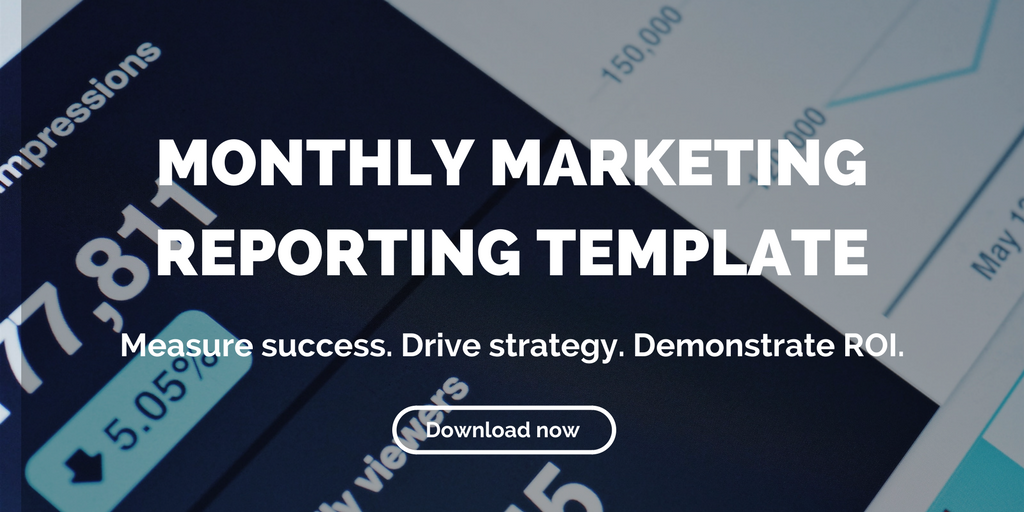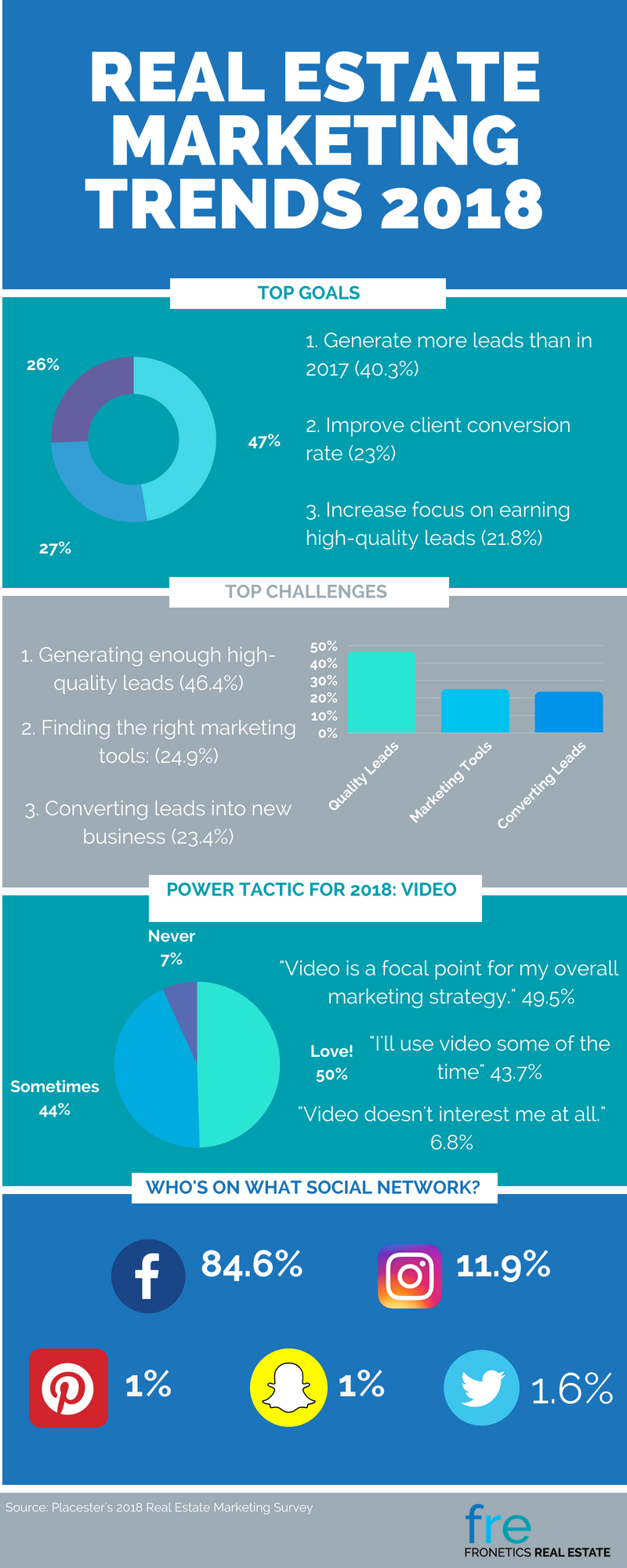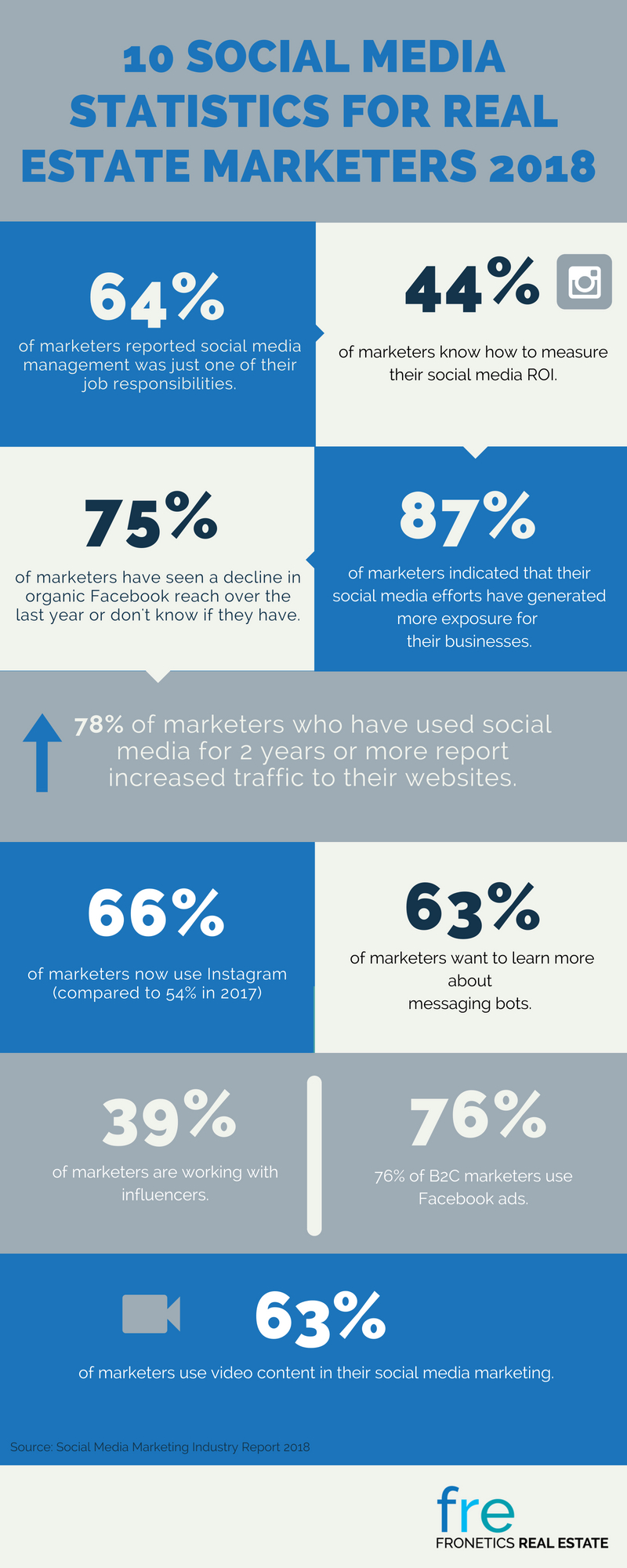Archive for the "Blog" Category

Measure Social Media Success in Terms of Potential, not Dollar Amount
Social media gives you access to aspirational buyers and their networks, a benefit that can’t be quantified in dollars. It’s time to redefine social media success.
One of the trickiest things about implementing a social media strategy is that social media success can be difficult to measure. While most real estate professionals acknowledge that a social media marketing presence is important, it’s hard to make a case for resources when you can’t precisely quantify the value in terms of dollar amount.
Of course, you shouldn’t stop recognizing the importance of social media as part of a robust marketing strategy. You need to start thinking about value in terms of potential, rather than an immediate sale or rental.
Social media success in real estate will seem more attainable if you:
- Shift the focus from short-term sale to the long-term value of social media.
- Trust your efforts will pay off, even if not immediately.
- Find new ways to measure results over time.
Social media success comes from access to a new audience
Social media allows real estate professionals to discover and engage with a new segment of the market: aspirational buyers and renters. Suddenly, you are faced with an exciting prospect: access to a population that businesses in the past could not reach. Now that we can find out who they are, their long-term value cannot be overstated:
- They are your potential buyers.
- They can build brand loyalty for your business.
- They can engage with your properties.
According to a recent study published in MIT Sloan Management Review, aspirational buyers are likely to follow multiple brands on social media sites. Over half follow at least one brand that they haven’t made a purchase from. But, “our data suggests that they do plan to purchase in the future,” say the study’s authors. “Today’s followers are very likely to be tomorrow’s customers.”
It’s easy to see the implications for real estate marketing, as you can target your messaging for individuals who may not yet be ready to sign a contract, but who are following your properties with interest.
The social network = social media success
There’s another factor to consider regarding the value of social media marketing. At its core, these are networking platforms. That means you not only have access to a new audience base, but to their connections as well.
Your followers’ engagement on social media can expand the reach of your brand and properties, as they engage with their own networks. Putting a dollar value on such social reach is fairly meaningless — but it has the potential to add to your bottom line both now and in the future. For social media success, reach is an important part of the equation.
What’s more, a recent McKinsey study attributes word of mouth to be the primary influence for up to 50% of all purchase decisions. The study authors go on to say, “Followers who are not yet purchasers can share their experience with the brand, and deepen their commitment to the brand, even prior to that first purchase.”
It’s time we start thinking about social media success in this new way: in terms of potential and expanding value, rather than just immediate dollar amounts.
Related posts:
- 10 Social Media Statistics for Real Estate Marketers 2018
- Social Media Can Be a Strategic Weapon in Real Estate Marketing
- How to Use Social Media Hashtags in Real Estate Marketing
Archive for the "Blog" Category

Content Marketing vs. Sales Staff: Who Does What?
When your content marketing and sales forces align their efforts, they form a powerful symbiotic relationship that grows your brand and your bottom line.
There’s a big misperception out there that content marketing represents some kind of threat to the job security of sales personnel.
It’s absolutely true that content marketing is an inbound approach, contrary to the traditional outbound approach of a real estate sales force. But make no mistake: Content marketing is not a substitute or replacement for an expert sales staff.
In fact, it’s when marketing and sales work in tandem that they’re most effective. They can help each other out to generate more leads, nurture current leads more effectively, and even help close more deals.
Content marketing helps generate a steady flow of quality leads, and it provides targeted information to usher prospects down the sales funnel. But even quality leads don’t turn into sales on their own. This is where a sales staff comes in — to take those leads and cultivate them into new business.
Content marketing vs. sales: Division of labor
For content marketing and sales to work seamlessly together, it’s important to have a clear idea of the role of each. They provide different touch points for leads at each stage of the buying cycle. Here’s a quick primer:
1. Forming a relationship
In this early stage of the cycle, your content marketing efforts go toward opening up a dialogue with potential buyers and renters. Often, potential leads’ first engagement with your property comes when they come across one of your blog posts while searching the web or see one of your social media posts because they’re connected to one of your followers.
This is when your sales staff picks up the ball, keeping that positive contact going by developing it into a conversation. It’s your sales team’s job to cultivate an ongoing personal relationship with leads that come in because they encountered your content.
2. Providing information
Now that you’ve established a relationship and your sales team is continuing a dialogue with your prospect, content marketing can step in. Potential buyers spend more time than ever researching properties, considering content such as blog posts, neighborhood guides, and social media posts before making a purchase decision. The content that you share with prospects at this stage of the buyer’s journey should be designed to answer informed questions and tip the scales in your favor.
At this stage, your sales staff should be directly answering questions from prospects. When a lead reaches out with a query, it’s likely that he or she has done a fair amount of research. So your sales reps need to speak specifically to the customer’s needs in a way that content alone can’t do to keep them interested and moving down the funnel.
3. Advocating for your brand
Content marketing increases brand awareness for your properties. It helps elevate your brand position within the real estate industry and keeps your property in their sightlines, even at a time when potential buyers aren’t ready to make a purchase.
When a prospect is preparing to make a purchase or to rent property, your sales staff is the primary advocate for your brand and properties. They should be proactive in pursuing business when leads show interest in your content or when they reach out with questions. They drive dialogue and get to know potential buyers and how your property can suit their needs.
A match made in heaven
When content marketing and sales work together, you’ll see the results hit your bottom line. Curating and creating great content will generate quality leads for your company and can empower your sales force to build relationships with potential buyers and renters — and to close the deal.
Related posts:
- Infographic: Real Estate Marketing Trends 2018
- 10 Social Media Statistics for Real Estate Marketers 2018
- How to Measure Brand Awareness: A Guide for Real Estate Marketers
Archive for the "Blog" Category

Infographic: Real Estate Marketing Trends 2018
Placester’s 2018 Real Estate Marketing Survey reveals these real estate marketing trends: lead generation, challenges, the rise of video content, and social media.
Earlier this year, digital marketing platform Placester published the results of its 2018 Real Estate Marketing Survey. The survey collected data from hundreds of real estate professionals nationwide and contains valuable information for benchmarking your marketing efforts, in “an industry ready to invest more time, money, and energy toward online marketing and generating more leads.”
When we looked at the survey results, we found that there were four big takeaways for real estate marketing professionals: goals, challenges, the rise of video content, and social media. Our infographic below delves into each of these four key areas.
Why are these results significant for me?
First off, you can learn a lot from looking at the aggregate goals for the real estate industry. Understanding what peers are working toward can help you tailor your own efforts, prune unnecessary practices, and optimize your marketing efforts. Knowing, for example, that 40.3% of survey respondents cited lead generation as a top objective helps you get to the bottom line: Regardless of experience, skill level, or niche, real estate professionals are focused on attracting valuable clients, and you should be, too.
Likewise, having an understanding of industry-wide challenges can offer valuable insight. Placester’s survey reveals that just as lead generation is a top priority for the majority of respondents, it’s also the top concern for real estate professionals.
As far as techniques go, one of the most popular marketing tactics for greater exposure in 2018 is emerging as video. The survey reveals that the real estate industry is embracing the power of video marketing. And the good news is, you don’t need an expensive camera, lighting, or a production studio. Your smartphone can be just as effective for creating video content for your social media outlets.
Which brings us to social media. A whopping 84.6% of respondents pointed to Facebook as the social media network they will use the most in 2018. And for good reason. Facebook is ideal for real estate marketing in many ways. Its large user base makes it a go-to network, as well as its robust mobile presence, with location-specific advertising and sophisticated algorithms to help you reach your target audience.
Check out our infographic below for a summary of the rest of Placester’s data.
Real estate marketing trends 2018 infographic
Related posts:
- A Visual Guide to Social Media Posting Frequency for Real Estate
- 10 Social Media Statistics for Real Estate Marketers 2018
- 5 TED Talks for Real Estate Marketers
Archive for the "Blog" Category

5 TED Talks for Real Estate Marketers
Need a little inspiration? Check out our top 5 TED talks for real estate marketers.
The popularity of TED Talks seems to have increased recently. A decade ago, the lecture series focused on technology, education, and design wasn’t a household name. Today, the number of views totals well over 1 billion.
TED Talks can be inspiring and full of useful information from thought leaders in all aspects of the field. Here are 5 that we think real estate marketers should watch right now.
5 TED Talks for real estate marketers
Co-founder of Fundrise — an investment platform for creating a simple, low-cost way for anyone to access real estate — Ben Miller discusses the role technology will play in how people invest in real estate in the future. He offers his perspective, gleaned from 15 years in real estate and finance, in which he has acquired, developed, and financed more than $500 million in property.
You may have heard the phrase “The Golden Circle,” coined by Simon Sinek. It starts with the question “why?” and examines the emotional core of what makes employees and customers buy into a company. In his extremely popular TED Talk, Sinek discusses the connection between The Golden Circle, marketing, and consumer behavior — a must-watch for all content marketing professionals.
Prolific author and marketing guru Seth Godin offers his insights about creating remarkable stories. He posits the idea that when it comes to getting attention, bad or bizarre ideas are more successful than boring ones. Ultimately, he advocates for a tailored, specific message spread passionately to those who want to listen.
Gunnar Branson is the CEO of the National Association of Real Estate Investment Managers. His TED Talk applies Moore’s Law (which predicts that technology will get exponentially smaller as it advances) to real estate. He predicts that the physical space we live, work, and play in will transform in front of our eyes, and discusses how those changes will impact the real estate market.
This one is good for the soul! Author, scholar, and speaker Kio Stark says, “When you talk to strangers, you’re making beautiful interruptions into the expected narrative of your daily life — and theirs.” Her talk explores the benefits of pushing through discomfort with strangers, and embracing what can become profound moments of genuine connection. It’s an inspiring listen for real estate marketers, in a field that’s all about connecting and telling a story.
What TED Talks for real estate do you recommend?
Related posts:
- 10 Social Media Statistics for Real Estate Marketers 2018
- 4 Real Estate Marketing Trends 2018
- 10 Must-Follow Blogs for Real Estate Marketers
Archive for the "Blog" Category

10 Social Media Statistics for Real Estate Marketers 2018
The latest social media statistics show growth of Instagram, social messaging bots, and video content.
We joke around here that one thing that will always stay the same is that social media will always be changing. 2018 has been a remarkable example of that thus far, particularly in regards to platforms like Facebook.
Every so often, we like to take a step back and look at what the data is telling us about where social media is heading and what that might mean for real estate marketers.
Social Media Examiner’s 10th annual study, 2018 Social Media Marketing Industry Report, surveyed more than 5,700 marketers from across the world in a variety of industries — including real estate. It offers a really comprehensive view of what’s going on in social media in our industry and beyond.
I’ve pulled out 10 social media statistics from this report that I want to talk about in more depth. I think they say a lot about where social media is headed and what real estate marketers should be paying attention to.
10 social media statistics for real estate marketers
1) For 64% of marketers, social media management is just one of their job responsibilities.
This one blows me away, knowing how much time and effort it takes to run a company’s social media program. Only about one-third (36%) of marketers manage social media full time. The other two-thirds have to do that on top of their other responsibilities. That’s crazy!
Developers, property managers, and real estate marketers: it’s time to recognize how important social media is for marketing your property and dedicate the appropriate resources to social media management. If you can’t afford to hire someone to do it full time, consider outsourcing this task.
2) Only 44% of marketers agree they can measure their social media ROI.
Only 10% of survey respondents “strongly agree” and 34% “agree” with the statement, “I am able to measure the return on investment (ROI) for my social media activities.”
Again, I’m kind of blown away. As a firm that relies on data and analytics to inform our processes and strategies, including social, it seems irresponsible to not know if your efforts are effective.
Ok, on one hand, it’s actually really difficult to measure social media ROI. That’s in large part because so many of the benefits are intangible. You should really be thinking of social media investment in terms of potential, not dollars.
BUT there are some ways to calculate ROI for all your content marketing and social media efforts. Here are a few resources:
- What Metrics Should You Track in Real Estate Marketing?
- The Metrics You Should Be Measuring in Real Estate Marketing (Hint: Not Vanity Metrics)
- How to Measure Brand Awareness: A Guide for Real Estate Marketers
3) 75% of marketers have seen a decline in organic Facebook reach over the last year or don’t know if they have.
A significant 52% of marketers surveyed said they saw their Facebook reach decline in the last year. Plus, 23% of marketers surveyed were unsure if it had or not — probably not a good sign. Yet 97% of B2C marketers are using Facebook. Something’s not adding up for me here.
As we’ve written about a lot recently, businesses need to be keeping a close eye on Facebook in light of all the recent changes. While we at Fronetics Real Estate are not ready to write off Facebook for business (especially real estate companies) completely yet, it’s time to start doing things a little differently.
Here are a few things you should do immediately to ensure you’re still reaching your target audience:
- Focus on newsworthy content that drives engagement. You need to start thinking of Facebook as a place to post and discuss active news items, hot-button issues, and highly shareable content (content that is educational or entertaining, for example).
- Tell your community to access the See First feature. Users who still want to see posts from certain Pages they follow can choose “See First” in News Feed Preferences. So, quite simply, we suggest asking your followers to choose to see your content.
- Consider your ad budget. Especially for new properties or those who rely heavily on referral traffic, you might want to consider reallocating budget to sponsored ads.
Stay tuned to the Fronetics blog as we continue to gather information and offer suggestions.
4) 87% of marketers rank more exposure for their businesses as the primary benefit of their social media efforts.
Building brand awareness is a key benefit of social media use for real estate. The Social Media Examiner survey respondents said that increased traffic was the second major benefit, with 78% reporting positive results. These top two benefits have remained virtually unchanged for 4 years.
5) 78% of marketers who have used social media for 2 years or more report increased traffic to their websites.
Also to note, 83% of those who have used social media for 5 or more years “strongly agree” or “agree” that traffic has increased to their websites because of social media activity.
I wanted to pull these social media statistics out because they reinforce the time-honored truth that content marketing (including social media management) is a long-term solution — not an overnight fix. The benefits, especially in terms of metrics like traffic, grow exponentially over time.
You have to allow time for prospects to find you and for your audience to grow organically. Use your social media platforms as a means to distribute meaningful information to your target audience and to communicate with prospects and residents, and it will pay off.
6) 66% of marketers are now using Instagram.
In 2016 and 2017, we answered a lot of questions about Snapchat. Founder of the Content Marketing Institute Joe Pulizzi named Snapchat one of the next big trends in content marketing for 2017. Everyone thought this platform was going to be our new social media darling.
Instead, Instagram has surpassed Twitter and LinkedIn to be the second-most-used social media platform. (It was fourth in 2017.) Use is up dramatically from 54% in 2017. Those are numbers worth paying attention to.
Most of our real estate clients use Instagram with great success. If you’re not on this platform, it’s time to join.
7) 63% of marketers use video content in their social media marketing.
One real estate marketing trend everyone got right? The growing prevalence of video.
Not only do nearly two-thirds of marketers use video content in their social media marketing, 23% use live video. What’s more, 77% plan to increase video content and 63% plan to increase live video in the next year.
The real estate industry is embracing the power of video marketing. And the good news is, you don’t need expensive camera, lighting, or a production studio — your smartphone can be just as effective for creating video content for your social media outlets.
8) 70% of marketers want to learn more about messenger bots.
Here’s a big takeaway from the survey: Everyone’s talking about messenger bots/social messenger apps. While adoption is still pretty low (only 15% are using Facebook messenger bots now), 51% of survey respondents plan to include them in future marketing.
It’s time to start reading up on marketing automation tools like chatbots and social messenger apps. We’ve got a lot of information about these things scheduled on our blog in the next few months, so keep coming back for more information on how these tools apply to real estate marketing.
9) 39% of marketers are working with influencers.
Influencer marketing is another trend we’ve been talking about lately. It makes sense: Buyers value the opinions of peers and colleagues. In fact, 82% of Americans seek recommendations when making a purchase of any kind. Such a major purchase like real estate can be greatly influenced by what buyers’ peers think of the neighborhood, community or building, etc.
In real estate, it’s important to consider other people who might influence buyers and renters. Aside from family and friends, financial advisors, brokers, interior designers, and celebrities (be they local professional athletes or social media celebrities) can have an impact on buyers’ opinions of a property.
10) 76% of B2C marketers use Facebook ads.
Interesting that more than three-fourths of B2C brands advertise on Facebook. On one hand, if you’re not doing it, do you lose your seat at the table? But on the other, are there opportunities on other advertising platforms that aren’t so crowded?
The survey also found that 72% of B2C marketers are interested in learning about Instagram ads. This is likely because of the platform’s phenomenal growth and, no doubt, brands’ success with it thus far. It’s something to think about when planning your social advertising.
If you’re interested, I recommend reading the whole 44-page report from Social Media Examiner. There are a ton of really interesting social media statistics that offer great insight into how marketers are using social media and how it’s changing — both over the the last few years and in the short-term.
What social media statistics are most interesting to you?
Related posts:
- A Visual Guide to Social Media Posting Frequency for Real Estate
- How to Use Social Media Hashtags in Real Estate Marketing
- Social Media Can Be a Strategic Weapon in Real Estate Marketing
Archive for the "Blog" Category

Should I Be Using Facebook Carousel Ads?
Facebook carousel ads helped one real estate company achieve a 63% increase in click-through rate and a 24% decrease in cost-per-acquisition.
Facebook carousel ads offer a highly visual and engaging way to promote your properties. Not only that, Kinetic Social recently found that carousel ads are up to 10 times more effective than static sponsored Facebook posts at driving traffic to advertisers’ websites. And if that’s not enough, they boast a 72% higher click-through rate than single-image mobile app ads.
The data makes it clear: Facebook carousel ads are absolutely something you should be using to promote your properties! Here’s a quick refresher on what they are, and some of our favorite tips for making the most of this promotional tool.
What’s a Facebook carousel ad?
This ad format integrates across Facebook and Instagram. It shows 3-5 images, headlines, links, and/or calls-to-action in a single ad unit, which users can click through. The “carousel” refers to the way images scroll horizontally across the screen, creating an engaging way for users to interact with your images. Each image has its own description and link, helping to drive traffic more effectively.
As you might expect, having the ability to showcase multiple images in an ad helps in lowering cost-per-conversion or -click, optimizing your creative output, and driving results across campaign objectives.
If it’s not already obvious, this format is a no-brainer for advertising real estate. Check out this spotlight from Facebook on Lamudi, an online real estate marketplace that used Facebook carousel ads to the tune of a 63% increase in click-through rate and a 24% decrease in cost-per-acquisition.
Using Facebook carousel ads
Creating a carousel ad is a simple process. It allows you to be creative and tell a story with the images you choose. Here are three easy steps for getting started:
1) Decide on your objective.
Having a defined goal is key when it comes to any content marketing, and carousel ad creation is no different. Facebook helps you target an objective, giving you the choice to select either “send people to your website” or “increase conversions.” Depending on your selection, an algorithm optimizes who sees your ad and when.
2) Create your ad.
Start by selecting “multiple images in one ad.” Next, get creative! Be sure to connect your ad to your Facebook page, and write a message that will stay on the screen over the images as users scroll through. Select 3-5 images, with a recommended size of 600 x 600 pixels each. You can write a separate headline and short description for each image.
3) Make the most of your images.
Facebook gives you the option to select “automatically show the best performing images and links first” — do it! This means that, as your campaign progresses, the image that’s getting the most clicks will appear first. However, if the story you’re trying to tell depends on the images appearing in a certain order (a before/after at a property, for example), uncheck this option.
The bottom line is that Facebook carousel ads are an extremely effective way to drive traffic to your properties.
Related posts:




